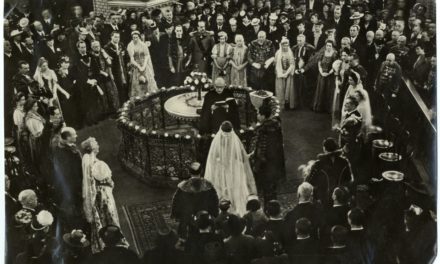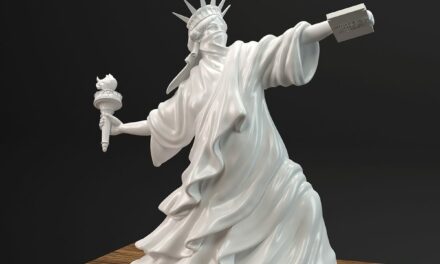Heart and soul, but only three colors are sewn together: red, white and green. Wow, what could be more than that?
When researching the origin of cockades, we have to go all the way back to the Middle Ages. The word certainly comes from the French word "cocarde" meaning cock's comb, as it was a common custom among the soldiers there to pin a cock's feather on their helmet. Well, it wasn't dictated by the fashion of the time out of whim, but so that they could recognize each other, since one of the armored armies that were fighting each other had coca feathers, and the other didn't.
The cockade later became fashionable, presumably as a community-forging memory of the dahlia times.
This is how we get to the revolution that broke out in Paris on July 14, 1789, when people folded the ribbon patterning the colors of the French tricolor in a circle and pinned it to their hats or coats. This is how the cockade became one of the symbols of the noble motto of "freedom, equality, fraternity" conceived in the bourgeois revolution.
According to the records, Marquis Gilbert du Motier de La Fayette made the first blue-white-red badge that he wore on his hat the day after the capture of the Bastille in Paris.
In order to protect public order, the Marquis created the National Guard on July 15, and handed over the first cockade to Jean Sylvain Bailly, the mayor of Paris, with these words: "I have brought a cockade that will go around the world."
If not the world, but he really went around France. He became so popular in Paris in no time that two days later the king himself, XVI. Louis was also forced to wear the Phrygian hat decorated with a cockade. It later became the symbol of the moderate Girondists, as the Jacobins led by Robespierre wore a fire-red cockade symbolizing defiance and a national emergency. The tricolor as a national symbol came to the fore again under Napoleon, and then in the 18th and 19th centuries. during the revolutions of the 19th century, it really traveled around the world, as it became a symbol of the bourgeois transformation showing national colors in both Europe and America.
Fifty years later, it was also seething in Hungary. The news of the new revolution in Paris and then in Vienna, which broke out on February 22, 1848, reached Pest like lightning.
The young people gathered around Sándor Petőfi in the Pilvax coffee house cast their "watchful eyes" on Paris because of Viennese arbitrariness. This is how the cockade arrived in Pest.
Petőfi wrote the following in his diary about March 14, 1848: "While I was writing the national song at one table, my wife was sewing a national headband at the other table."
According to tradition, not only Petőfi's wife, Júlia Szendrey, but also Róza Laborfalvi, the wife of his good friend, Mór Jókai, from Székely, sat there. The two women made the first cockades together, from the three colors of our nation, our people, i.e. red, which we should correctly call red, white and green, which we fold from the outside to the inside to get the cockade.
The Pest revolution ended in the evening with the Bánk bán performance presented at the National Theatre, which Mór Jókai remembered the following day: "The theater was an altar today, the audience was present with festive faces, in their festive clothes; the national cockade was pinned on the chest of every man and every woman, with the tricolor flag in the middle."
As for the tricolor as a national flag, it was sanctioned by Article 21 of the April Laws adopted in the old capital, Bratislava, after the March Pest Revolution, and raised to the rank of the flag of the Hungarian nation.
Petőfi even wrote a poem: "What are you doing, what are you sewing there? / Are you patching my clothes? / I like rags, / Sew a flag instead, my wife!” (Sándor Petőfi: What are you doing, what are you sewing there?)
The love of the Hungarian people is perfectly expressed by the newspaper Márczius Tizenfötödike, which reports shortly after the Pest revolution that "The national red-white-green will be used instead of the yellow-black colors for the royal buildings (...) the aristocrats, the bourgeoisie and a proletarian army down to the beggars, wearing the national cockade”.
And Dezső Kosztolányi wrote this in 1925: "My soul, you too, you too / - don't stick and canvas - / be a flag" (Dezső Kosztolányi: Zászló).
Cover image: Heart and soul, even though only three colors are sewn together: red, white and green
Source: Wikipedia/János Korom (Holiday decoration with cockade on Pápa)












